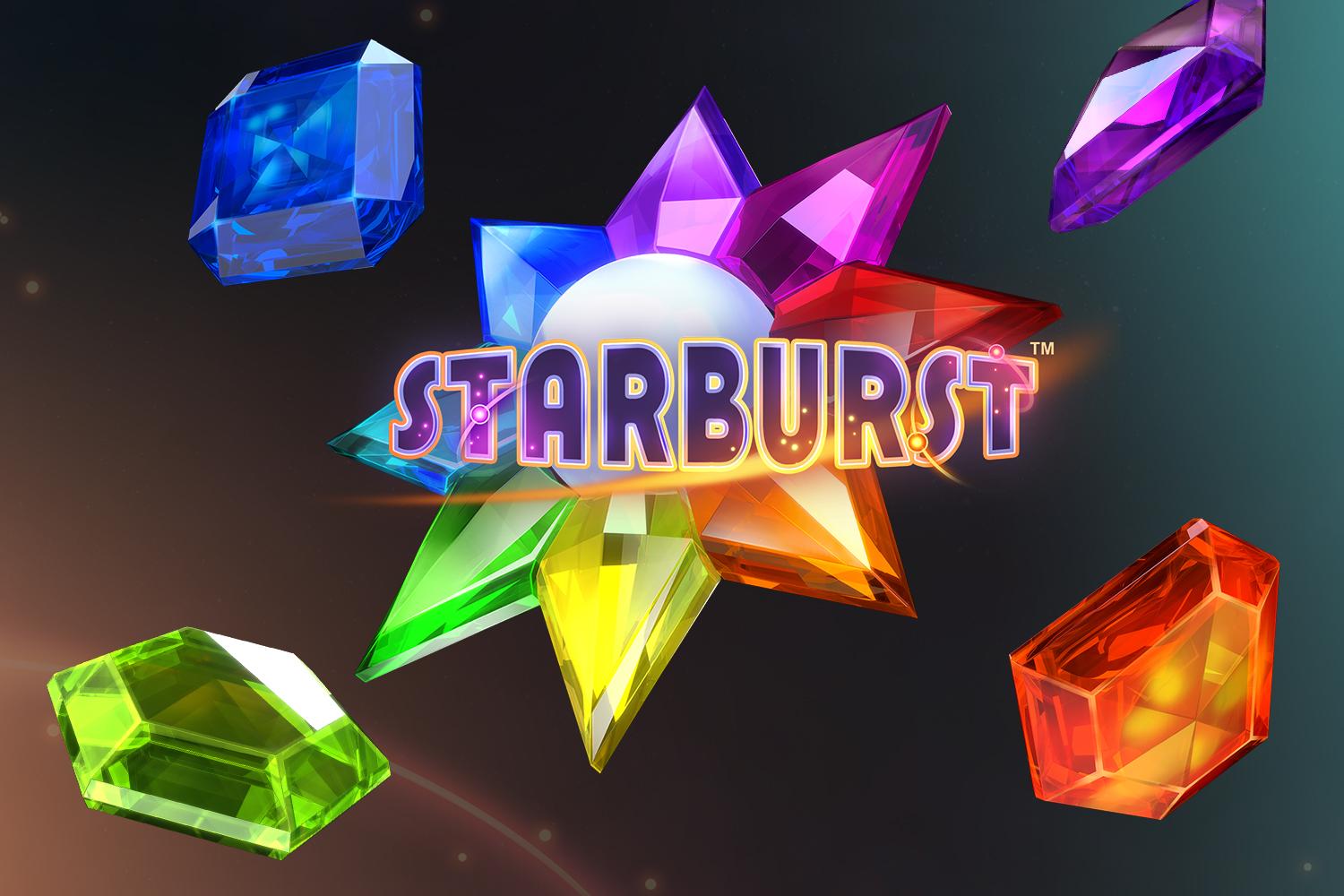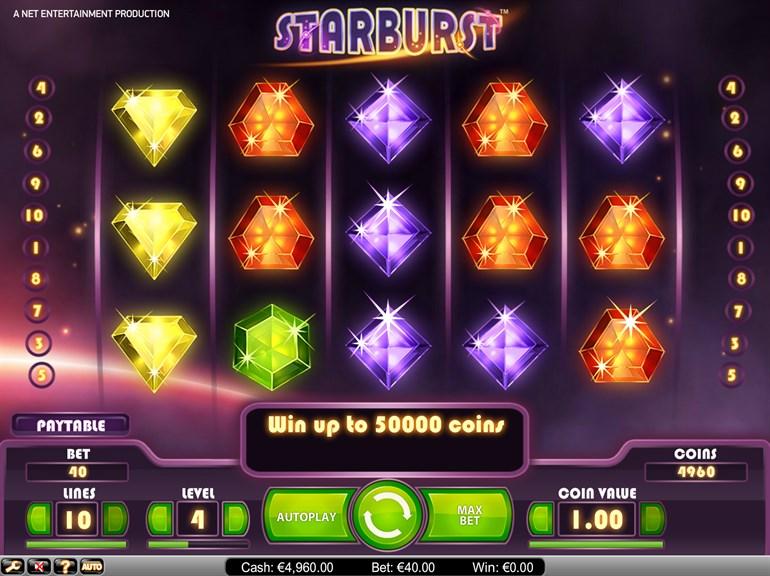Starburst is an online slot machine game developed by NetEnt. As I played Starburst, I noticed how its seemingly simple gameplay with exciting rewarding mechanics could easily lead players to spend more time and money than they intended. I argue that Starburst, through its use of visual and auditory stimuli—its vibrant colors, flashy animations, and exciting sound effects during winning and rewarding—along with its random and intermittent reward system, significantly heightens the risk of addiction.
Starburst puts players at risk for addiction by adopting visual and auditory stimuli. The game’s vibrant colors, sparkling gems, and dynamic animations create a highly stimulating environment. I found myself excited and highly amused by the visual effects, which, combined with the upbeat and celebratory sound effects, made the game incredibly engaging, though the mechanics are really simple. This sensory immersion makes it easy for players to lose track of time and continue playing for longer periods. For instance, I planned to play for 30 minutes and ended up playing for more than an hour.
The intermittent reinforcement schedule used in Starburst also contributes to its addictive potential. The game offers unpredictable payouts, creating a powerful psychological effect known as the “near-miss” phenomenon mentioned in the article by Natasha Dow Schüll. When I came close to winning but fell short, my brain’s reward centers were activated, making me more likely to continue playing in the hopes of eventually hitting the winning condition. This reinforcement schedule keeps players engaged, as they never know when the next big win might come.
When compared to other games of chance, such as poker, Starburst involves a significant degree of chance but lacks the skill component that can moderate gambling behavior in poker. In poker, players can improve their odds through strategy and experience. However, in Starburst, outcomes are entirely determined by luck—luck predesigned by developers via virtual reel mapping and its disproportionate reels, the illusory player control conveyed by stop buttons, and the illusory odds conveyed by teaser strips—leading to a sense of helplessness and dependence on the game’s randomness.
Traditional slot machines also rely on chance and random outcomes, but Starburst adds an extra layer of engagement through its interactive design and online accessibility. The convenience of being able to play from anywhere at any time increases the risk of prolonged play and financial loss. This heightened interactivity and accessibility can increase the game’s appeal and make it harder for players to disengage.
Starburst engages with probability and randomness in several ways that feed into addiction. The game’s reels are filled with various symbols, each with different probabilities of appearing. The high-frequency symbols offer more frequent but smaller rewards, while the low-frequency symbols promise rare but substantial jackpots. This design leverages the psychological allure of potentially winning big, even though the odds are heavily stacked against the player.
Last, randomness plays a crucial role in maintaining the game’s excitement and unpredictability. Each spin is an independent event, meaning the outcome is not influenced by previous spins. This independence creates the illusion that a big win could happen at any moment, encouraging me to keep spinning in the hopes of hitting the jackpot. The random nature of the game, combined with the near-miss effect, can lead to prolonged play sessions and increased financial risk.




